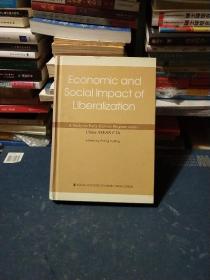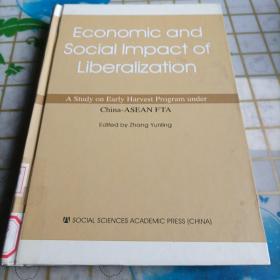
市场开放的经济与社会影响:对落实中国—东盟自贸区框架下早期收获计划的专项研究
正版保障 假一赔十 可开发票
¥ 36.21 1.9折 ¥ 188 全新
库存15件
广东广州
认证卖家担保交易快速发货售后保障
作者张蕴岭主编
出版社社会科学文献出版社
ISBN9787509705667
出版时间2009-01
装帧精装
开本16开
定价188元
货号4579408
上书时间2024-08-09
- 最新上架
商品详情
- 品相描述:全新
- 商品描述
-
目录
Introduction
Zhang Yunling
Ⅰ.RTA as a Strategy
Ⅱ.China-ASEAN Initiative
Ⅲ.The Framework Agreement
Ⅳ.Early Harvest Program
Ⅴ.China-ASEAN Relations in Progress
Ⅵ.Effects of the Implementation
Chapter 1 Economic and Social Effects of Agricultural
Liberalization under China-ASEAN FTA with
Special Focus on EHP: A Case Study from China
Yuan Bo
Ⅰ.Overview of Chinas Agricultural Liberalization
Ⅱ.EHP under the Framework of China-ASEAN FTA
Ⅲ.Agricultural Trade between China and ASEAN and Effects of EHP
Ⅳ.Case Study of EHP between China and Thailand
Ⅴ.Analysis on Future Effects of EHP
Ⅵ.Policy Recommendations
Appendix Tables
Chapter 2 Economic and Social Effects of Agricultural
Liberalization under China-ASEAN FTA with
Special Focus on EHP: A Case Study on Guangxi
Gu Xiaosong, Liu Jianwen and Huang Yaodong
Ⅰ.The Development of Agriculture of Guangxi
Ⅱ.The Implementation of EHP
2 / Economic and Social Impact of Liberalization
Ⅲ.Guangxis Import and Export Agricultural Products
Ⅳ.The Future Impact
Ⅴ.Survey Results
Chapter 3 Economic and Social Effects of Agricultural
Liberalization under China-ASEAN FTA with
Special Focus on EHP: A Case Study on Yunnan
Chen Tiejun, Jiang Maoxia
Ⅰ.Agricultural Trade between Yunnan and ASEAN
Ⅱ.Impact of EHP: Yunnan-Thailand Trade
Ⅲ.Survey Result: The Impact of EHP on Farmers Income
Chapter 4 Economic and Social Effects of Agricultural
Liberalization under China-ASEAN FTA with
Special Focus on EHP: A Case Study
from Thailand
Wisarn Pupphavesa
Ⅰ.Introduction
Ⅱ.Overview of Thailands Agricultural Sector
Ⅲ.Essence of ASEAN-China EHP and AEHP
Ⅳ.Relevance of EHP and AEHP to Thailands Agriculmxal Trade
Ⅴ.Trade Effects of China-Thailand AEHP and EHP
Ⅵ.Socio-Economic Effects of China-Thailand AEHP and EHP
Ⅶ.Thai Governments Adjustment Assistance
Ⅷ. Policy Recommendations
Chapter 5 Economic and Social Effects of Agricultural
Liberalization under China-ASEAN FTA with
Special Focus on EHP: A Case Study
from Indonesia
Tulus Tambunan
Ⅰ.Introduction
Ⅱ.General Review of Indonesian Agriculture Sector
Ⅲ.Indonesian Agricultural Liberalization
Ⅳ.Indonesian Trade Pattern with China on EHP Commodities
Ⅴ.Impact of Trade Liberalization in Agriculture
Ⅵ.Perspectives on the Participation of Indonesia in the EHP
Ⅶ.Concluding Remarks
Chapter 6 Economic and Social Effects of Agricultural
Liberalization under China-ASEAN FTA with
Special Focus on EHP: A Case Study
from Philippines
Erlinda M. Medalla, Jenny D. Balboa
Ⅰ.Introduction
Ⅱ.Overview of the Agriculture Sector
Ⅲ.EHP under China-ASEAN FTA
Ⅳ.Conclusion and Policy Recommendations
Chapter 7 Economic and Social Effects of Agricultural
Liberalization under China-ASEAN FTA with
Special Focus on EHP: A Case Study
from Vietnam
Pham Lan Huong, Vo Tri Thanh and Tran Binh Minh
Ⅰ.Overview of Agricultural Sector
Ⅱ.Liberalization of Agriculture through ACFTA and EHP in Particular
Ⅲ.Impact of ACFTA on Agriculture Trade and Agriculture Sector
Ⅳ.Case Study of the Socio-Economic Impacts of EHP
Chapter 8 Economic and Social Effects of Agricultural
Liberalization under China-ASEAN FTA with
Special Focus on EHP: A Case Study
from Cambodia
Chap Sotharith
Ⅰ.Introduction
Ⅱ.Overview of Agricultural Sector in Cambodia
4 / Economic and Social Impact of Liberalization
Ⅲ.Agricultural Liberation and Trade Pattern
Ⅳ.ASEAN-China FTA, EHP and Cambodia
Ⅴ.Impacts of Agricultural Liberalization under EHP
Ⅵ.A Survey on Impact of EHP
Ⅶ.Conclusion and Policy Recommendations
Chapter 9 Economic and Social Effects of Agricultural
Liberalization under China-ASEAN FTA with
Special Focus on EHP: A Case Study
from Lao PDR
Leeber Leebouapao
Ⅰ. Introduction
Ⅱ. Overview on Lao PDR Agricultural Trade Liberalization Process and EHP
Ⅲ. Lao PDR and China Trade Relations
Ⅳ. Socio-Economic Effects of EHP and Border Trade in Stead of
EHP: A Case Study in Luang Namtha Province
Ⅴ. Future Effects of EHP on Agriculture Products
Ⅵ. Conclusion and Policy Recommendations
Annexes
内容摘要
For example, the import quota for corn is 54440 million tons which is subject to a 20% tariff rate, while out-of-quota corn import is subject to a 73.8% tariff rate. This is the same to Malaysia; the tariff rates of some products beyond access commitment are subject to high ad valorem or specific duty, the highest ad valorem duty up to 160%, such as swine products, poultry products, milk,eggs, round cabbage, coffee beans, sugar.
Some ASEAN countries lay down strict SPS measures, such as the HALAL certificate of Malaysia to the import of poultry and livestock products, whose certificating process is thought to lack of transparency by many enterprises,which affects the export of relative products of China to Malaysia.
At the same time, the import restriction and anti-dumping from ASEAN upon Chinese agricultural products occurs from time to time. For example,Indonesia stopped the import of shrimp products from China in 2004, and imposed 9.5% final anti-dumping duty on corn flour product of China in Nov.of 2005.
The Continuous Rising on Export Cost
In recent years, affected by the rise in the prices of raw and processed material, labor cost, energy and shipping fares, and the increase in currency exchanging cost caused by the fluctuating of exchange rate, the general export cost of Chinese agricultural products has kept increasing. It is believed that the prices of raw and processed material, labor resource, and energy sources will keep increasing in the near future, which is expected to bring unfavorable effects to Chinas agricultural export to ASEAN, specifically, lack of labor resource and salary increasing will affect significantly the cost of the agricultural products that are processed by enterprises in eastern China, and the cost rise of energy sources and shipping will have even bigger effects on the export of agricultural products from central and western area of China, and the appreciation of RMB exchange rate will impose great pressure on the industries that signs future export contract and exports processed imported material, such as sea products.
精彩内容
In recent years, affected by the rise in the prices of raw and processed material, labor cost, energy and shipping fares, and the increase in currency exchanging cost caused by the fluctuating of exchange rate, the general export cost of Chinese agricultural products has kept increasing. It is believed that the prices of raw and processed material, labor resource, and energy sources will keep increasing in the near future, which is expected to bring unfavorable effects to Chinas agricultural export to ASEAN, specifically, lack of labor resource and salary increasing will affect significantly the cost of the agricultural products that are processed by enterprises in eastern China, and the cost rise of energy sources and shipping will have even bigger effects on the export of agricultural products from central and western area of China, and the appreciation of RMB exchange rate will impose great pressure on the industries that signs future export contract and exports processed imported material, such as sea products.
媒体评论
For example, the import quota for corn is 54440 million tons which is subject to a 20% tariff rate, while out-of-quota corn import is subject to a 73.8% tariff rate. This is the same to Malaysia;
the tariff rates of some products beyond access commitment are subject to high ad valorem or specific duty, the highest ad valorem duty up to 160%, such as swine products, poultry products,
milk,eggs, round cabbage, coffee beans, sugar.
Some ASEAN countries lay down strict SPS measures, such as the HALAL certificate of Malaysia to the im
相关推荐
— 没有更多了 —


















以下为对购买帮助不大的评价